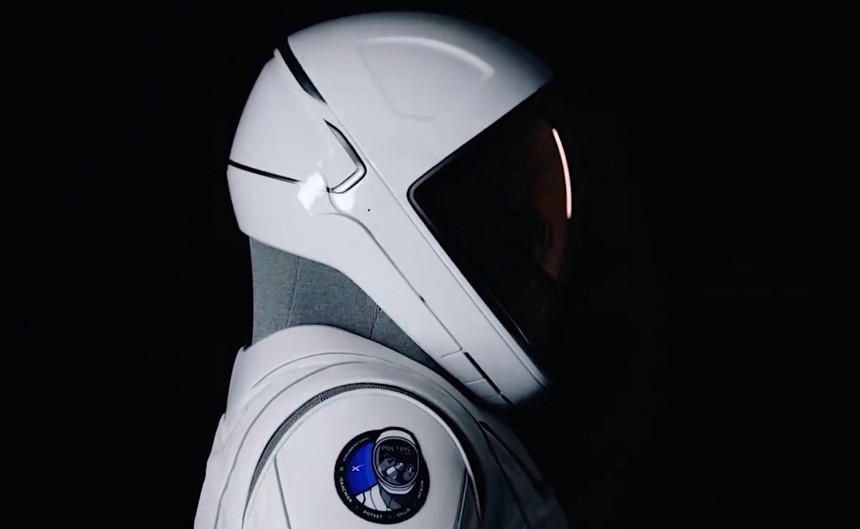Space tourism is a relatively new concept that is quickly catching on. Taking advantage of the advancements made in recent years when it comes to rocket and spacecraft design, several companies are presently offering trips to space in exchange for various sums of money. But none of these companies do this the way SpaceX does it.
Take Virgin Galactic and Blue Origin, for instance. Taking different approaches to space travel (the former launches horizontally from a carrier aircraft high up in the sky while the latter goes up vertically from a launch pad) they both give tourists the opportunity to experience all the wonders of space, but only for a few minutes per flight.
To date, SpaceX has conducted a single private spaceflight, but it let people stay in orbit inside the Crew Dragon spacecraft for almost three days. The mission was called Inspiration4 and sent up to orbit back in 2021 a crew of four, including the first human to fly into space with a prosthetic leg bone (Hayley Arceneaux).
The commander of humanity's first flight into space with only civilians on board was a guy named Jared Isaacman. He's known for many things, including being the CEO of payment processor Shift4 Payments, but history will probably remember him as a sort of space pioneer.
That's because not only did he lead the first all-civilian trip to space, but in the year that followed 2022, he tied the knot with SpaceX itself for a program called Polaris.
Named after the light in the sky we commonly know as the North Star, the program is meant to help design the "building blocks to help further human exploration to the Moon, Mars, and beyond."
The program is designed around three core missions that will eventually culminate with the first crewed flight of the mighty SpaceX Starship. It's unclear when this mission will occur, but Mission One, also known as Polaris Dawn, is expected as soon as the summer of this year and it will mark another pivotal moment of space exploration, especially the one led by private companies.
Polaris Dawn will mark the moment when the Crew Dragon spacecraft will fly to a higher Earth orbit than any other human mission has achieved, some 870 miles (1,400 km) from the surface of our world.
But that's not all. For the first time in the history of the world, four civilian astronauts will be conducting a spacewalk at the same time, at a distance of 434 miles (700 km) beyond the borders of our world.
The mission will be the first spacewalk (or Extravehicular Activity, EVA, if you prefer the official term) conducted by the Crew Dragon, but it also marks the first time civilians have literally been out in the vacuum of space, the first commercial astronaut spacewalk, if you will.
To make sure these guys are safe while stepping out of the Dragon, SpaceX and it partners have been working on a new spacesuit, which is technically an evolution of the pressure garments astronauts currently wear while boarding the private spacecraft.
We're promised the suit has been designed using new materials and fabrication processes, but most importantly they've been fitted with new joints that should allow for greater mobility – even if it's likely the first crew to wear them will not have to perform some sort of maintenance work on their ship.
The suit is highlighted by a 3D-printed helmet packing a visor coated with copper and indium tin oxide, meant to reduce glare during the spacewalk. There is also a camera fitted on the thing, and a heads-up display on the inside to feed astronauts relevant information like suit pressure, temperature, and relative humidity. This feature only becomes active during spacewalks.
The legs are protected by special boots, made from the same material SpaceX is using on the Falcon rockets and the Dragon spacecraft.
The suit is not a one-size-fits-all affair, but it is scalable, meaning SpaceX will be able to serve the needs of private and official astronauts no matter their height.
SpaceX says that even if the suit will be first put to the test in low-Earth orbit, its ultimate goal (or the goal of its successors) is to be used on the surface of the Moon and, finally, over on Mars, the planet Elon Musk seems determined to be the first to reach.
That's because even if all of SpaceX's current technologies (Falcon, Dragon, Starlink, and the Starship) have present-day applications, they are all part of a larger plan, stated by Musk earlier in April, of making life multi-planetary. Human life, that is.
The Polaris Dawn mission is scheduled to lift off later this summer from the Launch Complex 39A at Kennedy Space Center in Florida. The crew of the mission (Jared Isaacman, Scott Poteet, Sarah Gillis, Anna Menon) will spend five days in space, both inside the spacecraft and outside of it.
The launch date of the second mission of the Polaris program is not yet set, and we also don't know what new kind of tech will be tested on that one. Finally, Polaris 3, it too unscheduled at the moment, will take humans up into space on the Starship for the first time.
To date, SpaceX has conducted a single private spaceflight, but it let people stay in orbit inside the Crew Dragon spacecraft for almost three days. The mission was called Inspiration4 and sent up to orbit back in 2021 a crew of four, including the first human to fly into space with a prosthetic leg bone (Hayley Arceneaux).
The commander of humanity's first flight into space with only civilians on board was a guy named Jared Isaacman. He's known for many things, including being the CEO of payment processor Shift4 Payments, but history will probably remember him as a sort of space pioneer.
That's because not only did he lead the first all-civilian trip to space, but in the year that followed 2022, he tied the knot with SpaceX itself for a program called Polaris.
Named after the light in the sky we commonly know as the North Star, the program is meant to help design the "building blocks to help further human exploration to the Moon, Mars, and beyond."
Polaris Dawn will mark the moment when the Crew Dragon spacecraft will fly to a higher Earth orbit than any other human mission has achieved, some 870 miles (1,400 km) from the surface of our world.
But that's not all. For the first time in the history of the world, four civilian astronauts will be conducting a spacewalk at the same time, at a distance of 434 miles (700 km) beyond the borders of our world.
The mission will be the first spacewalk (or Extravehicular Activity, EVA, if you prefer the official term) conducted by the Crew Dragon, but it also marks the first time civilians have literally been out in the vacuum of space, the first commercial astronaut spacewalk, if you will.
To make sure these guys are safe while stepping out of the Dragon, SpaceX and it partners have been working on a new spacesuit, which is technically an evolution of the pressure garments astronauts currently wear while boarding the private spacecraft.
We're promised the suit has been designed using new materials and fabrication processes, but most importantly they've been fitted with new joints that should allow for greater mobility – even if it's likely the first crew to wear them will not have to perform some sort of maintenance work on their ship.
The legs are protected by special boots, made from the same material SpaceX is using on the Falcon rockets and the Dragon spacecraft.
The suit is not a one-size-fits-all affair, but it is scalable, meaning SpaceX will be able to serve the needs of private and official astronauts no matter their height.
SpaceX says that even if the suit will be first put to the test in low-Earth orbit, its ultimate goal (or the goal of its successors) is to be used on the surface of the Moon and, finally, over on Mars, the planet Elon Musk seems determined to be the first to reach.
That's because even if all of SpaceX's current technologies (Falcon, Dragon, Starlink, and the Starship) have present-day applications, they are all part of a larger plan, stated by Musk earlier in April, of making life multi-planetary. Human life, that is.
The Polaris Dawn mission is scheduled to lift off later this summer from the Launch Complex 39A at Kennedy Space Center in Florida. The crew of the mission (Jared Isaacman, Scott Poteet, Sarah Gillis, Anna Menon) will spend five days in space, both inside the spacecraft and outside of it.
The launch date of the second mission of the Polaris program is not yet set, and we also don't know what new kind of tech will be tested on that one. Finally, Polaris 3, it too unscheduled at the moment, will take humans up into space on the Starship for the first time.
The SpaceX Extravehicular Activity (EVA) suit → https://t.co/z2Z9iVpt6x #Maythe4thBeWithYou pic.twitter.com/peETlLCcDP
— SpaceX (@SpaceX) May 4, 2024





















